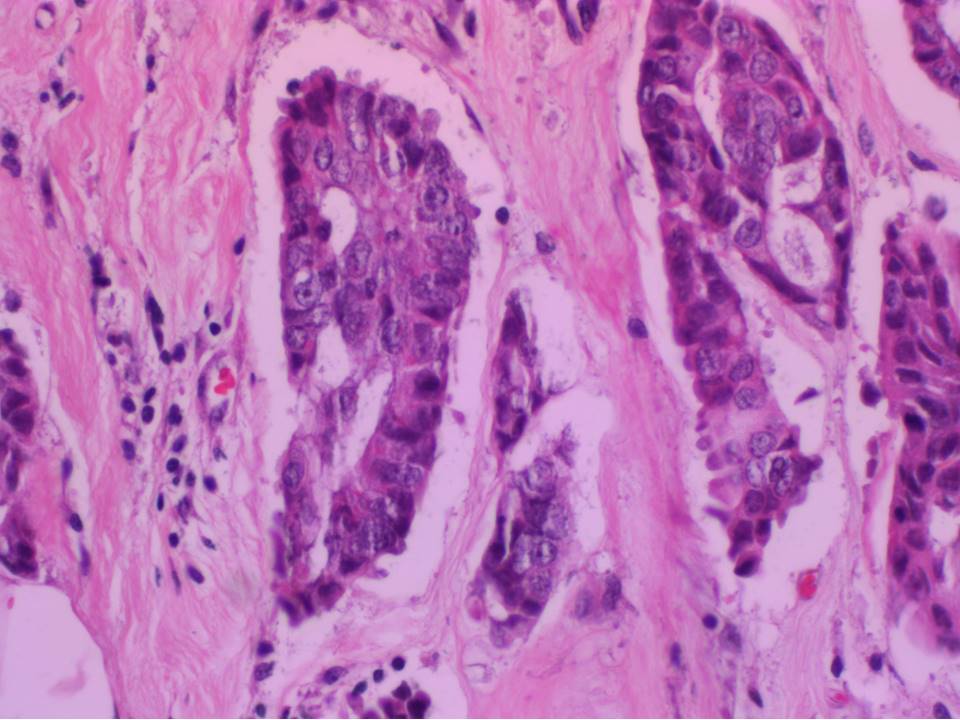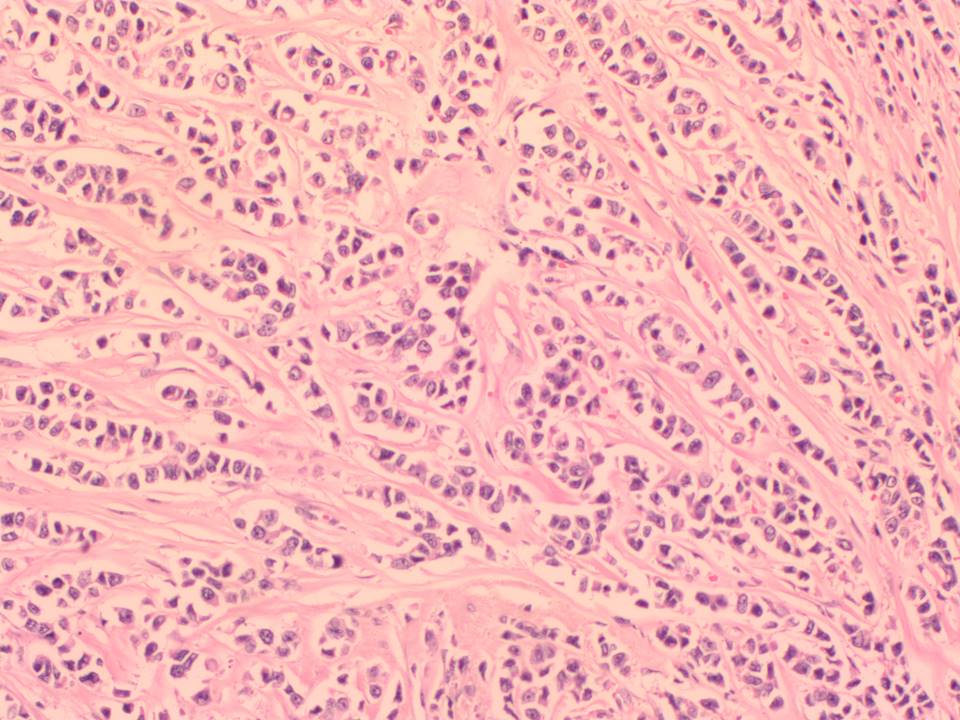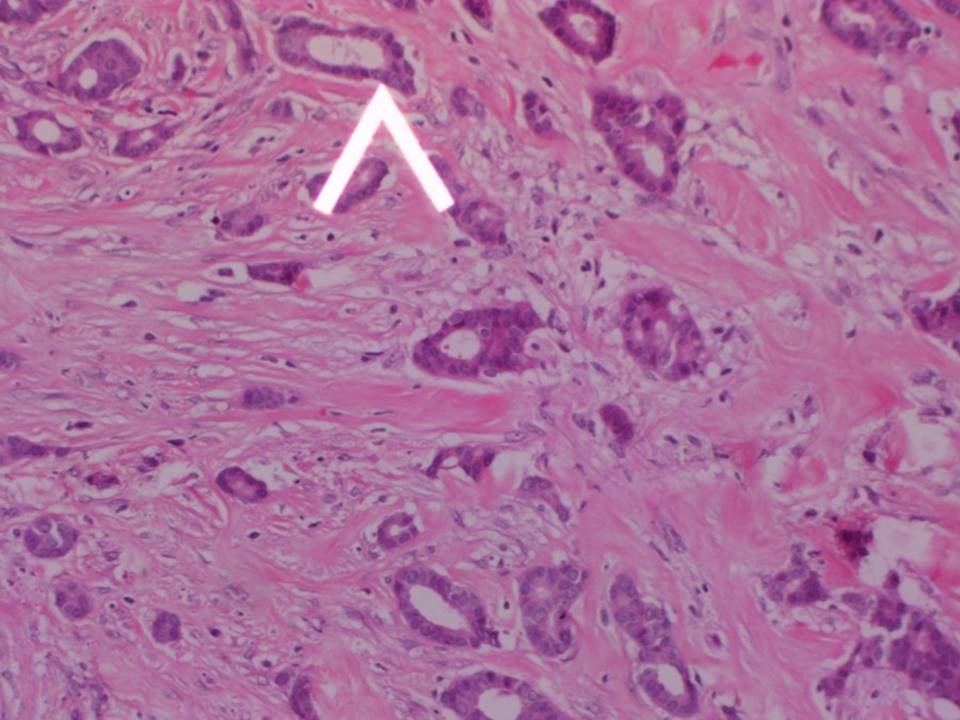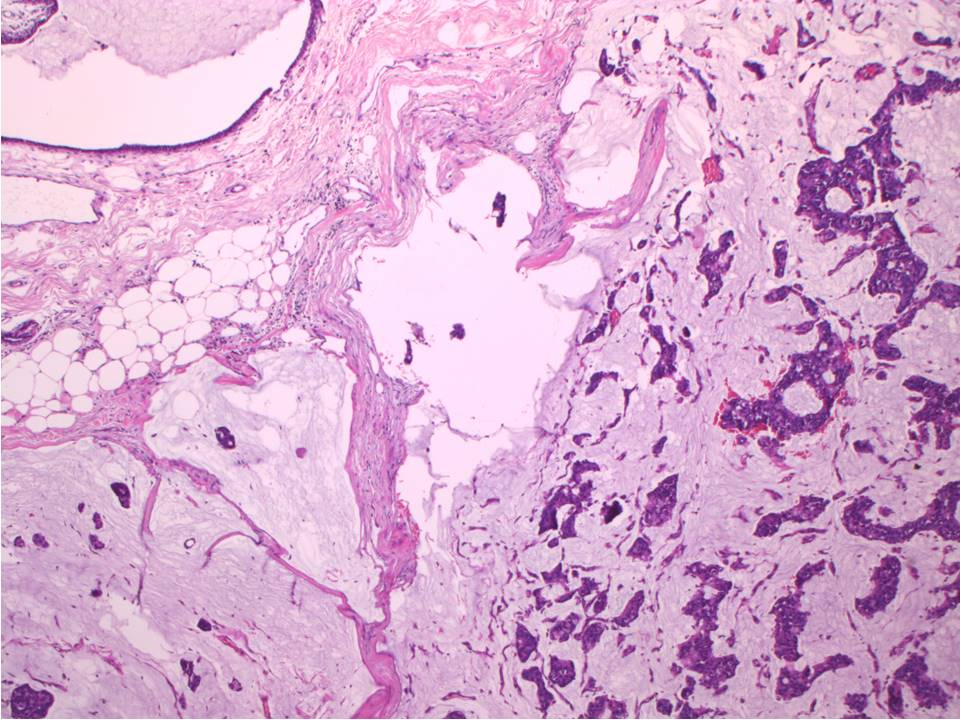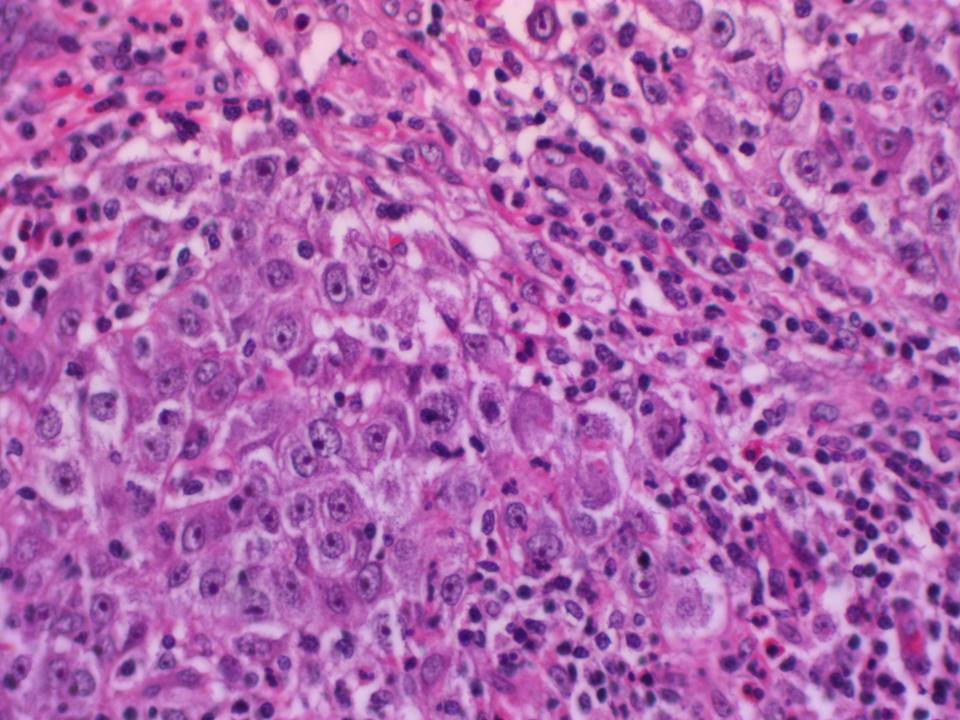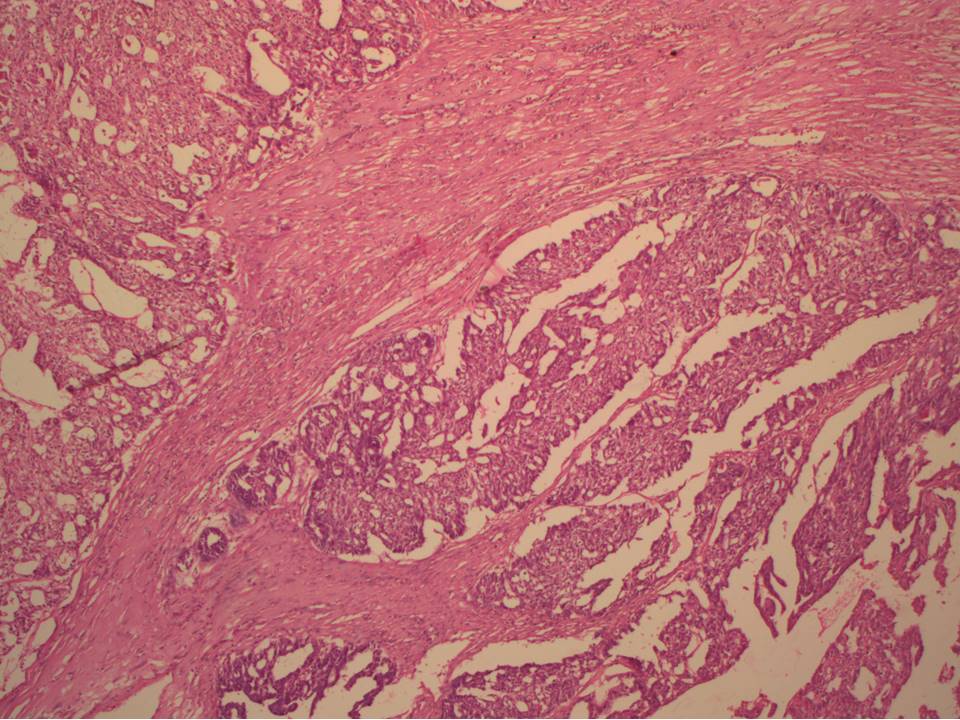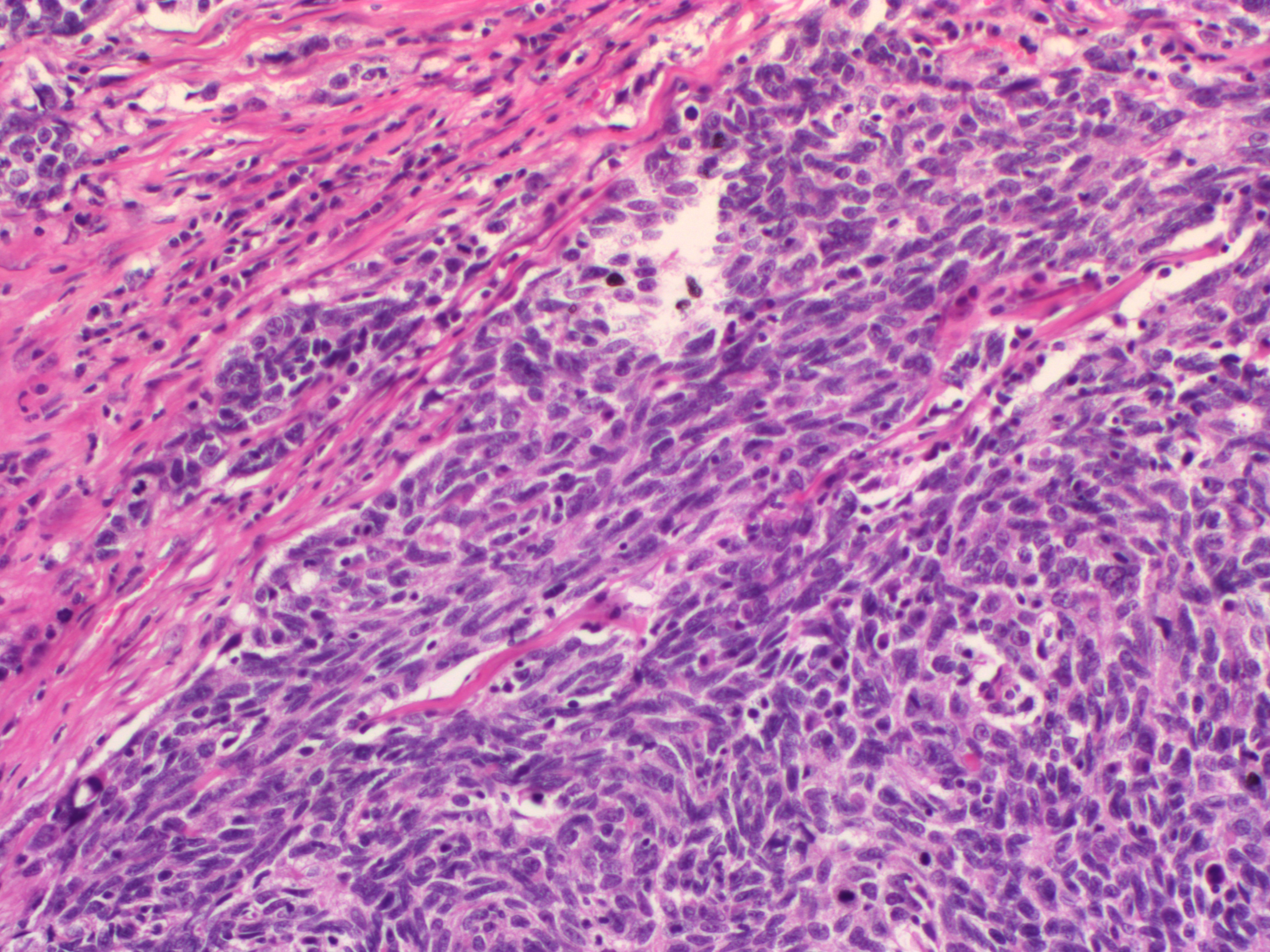Home / Training / Manuals / Atlas of breast cancer early detection / Learning
.png)
Click on the pictures to magnify and display the legends

Click on this icon to display a case study
Atlas of breast cancer early detection
Filter by language: English / РусскийBreast pathology – Histopathology of the breast – Description and significance of the components of the report – Histological subtype |
The International Classification of Diseases for Oncology, 3rd edition (ICD-O-3) published by IARC/WHO is internationally recognized as the definitive classification of neoplasms. ICD-O-3 is used principally in tumour or cancer registries for coding the site (topography) and the histology (morphology) of neoplasms, usually obtained from a pathology report. ICD-O-3 is a multi-axial classification of the site, morphology, behaviour, and grading of neoplasms. The topography code describes the anatomical site of origin of the tumour.
The WHO Classification of Tumours of the Breast, 5th edition is generally used classify tumours into various subtypes based on tumour architecture, cytonuclear features, and stromal features (WHO Classification of Tumours Editorial Board. Breast tumours. Lyon (France): International Agency for Research on Cancer; 2019. (WHO classification of tumours series, 5th edition; vol. 2)) A breast carcinoma showing a special histological pattern in more than 90% of the tumour is designated as a pure special type. Most breast cancers do not show such specific features and are designated as invasive breast carcinoma of no special type. The histological subtypes of invasive breast carcinoma are as follows:
|
Click on the pictures to magnify and display the legends
Click on this icon to display a case study
25 avenue Tony Garnier CS 90627 69366, LYON CEDEX 07 France - Tel: +33 (0)4 72 73 84 85
© IARC 2025 - Terms of use - Privacy Policy.
© IARC 2025 - Terms of use - Privacy Policy.




